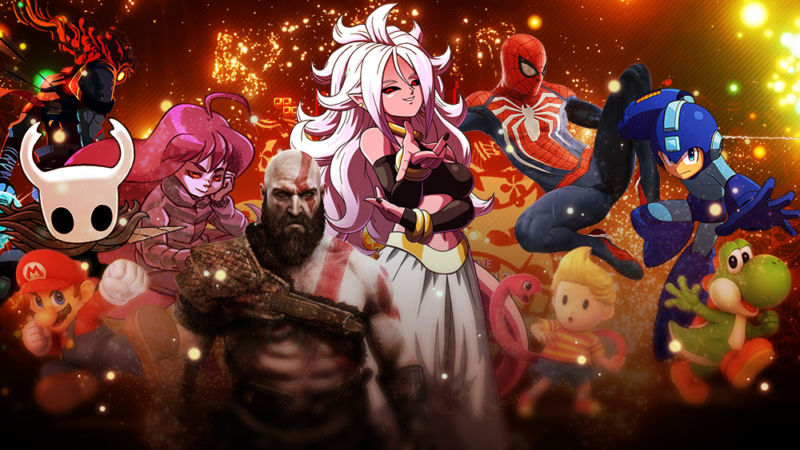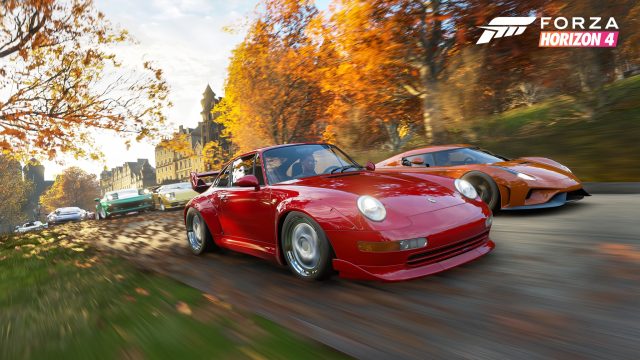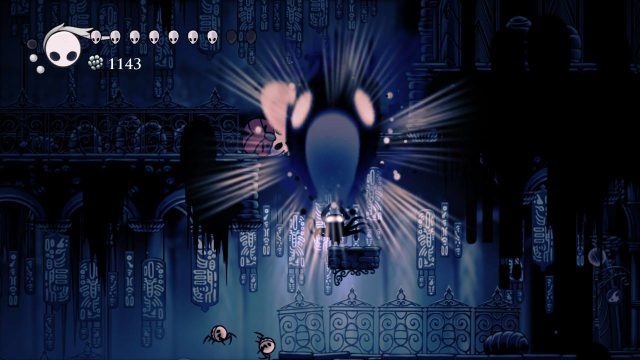
Before we get on to the list, don't miss this year's Ars Technica Charity Drive sweepstakes. You can win part of nearly $5,000 in prizes, including limited-edition gaming collectibles, all while helping out a good cause. Entries are due by January 7, 2019. Thanks in advance for your entry!
Running through this year's list of video games that made the most impact on the Ars staff, I'm struck by the sheer variety. Sure, there's the usual selection of open world adventures and slick action games. But there are also a handful of fresh takes on the puzzle game genre, a few promising virtual reality games, a relatively wide variety of 2D platformers, racing games that run the gamut from realistic to campy, a couple of fighting games, and even a rhythm game! (Editor's note: We promise you haven't time-traveled back to 2008.)
So no matter what kind of video game you like, 2018 had some excellent titles to check out. Without further ado, our favorite games of 2018 are...
20. Forza Horizon 4

Playground Games; Xbox One, Windows
After proving to the console world that it was possible to make a game as good as the almighty Gran Turismo franchise, Microsoft's Turn 10 Studios went and did one better. In addition to the standard Forza Motorsport racing games, now we also get treated to a new iteration of the more freeform Forza Horizon every couple of years. The FH games use most of the same cars and handle (pretty much) the same as the FM games, but instead of setting lap times on circuits like Laguna Seca and the Nurburgring, they're open-world adventures. The latest installment is Forza Horizon 4, which arrived at the end of September.Like its predecessors, Forza Horizon 4’s plot—really just a backdrop with a backstory—involves a music and lifestyle festival which, these days, merely serves to remind me I'm now middle aged and out-of-touch with the “yoof.” The setting this time is Great Britain; a pre-Brexit version, since there appear to be livestock in the fields and an absence of civil unrest and social breakdown. Other than a fresh locale, the big changes for FH4 are in the number of simultaneous players—now up to 72 in a session—and seasonal transitions that join dynamic day-to-night-to day lighting and dynamic weather to keep the place looking fresh.
Happily for some of our more misanthropic readers, there's plenty to do in solo mode without ever interacting with another human being (I call this the Hutchinson demographic). But all the online gaming fun you remember from earlier installments is present and correct. If you're looking for an accessible racing game that doesn't confine you the blacktop, this is probably it.
-Jonathan Gitlin
19. Yakuza 6

Sega; PS4
The long-running Yakuza franchise reached a climax this year. Now that the series’ longtime central protagonist, Kazuma Kiryu, is out of the picture, new games will now focus on new characters (at least for the time being). So it’s great that the Dragon of Dojima’s swan song was such a complete package. Then again, pretty much every Yakuza game is.Yakuza 6 tells a massive, twisting story of criminal conspiracies in modern Japan. That’s the main plot, anyway. The rest of the game is full to burst with goofy, but heartfelt side quests in which Kiryu aids oddball citizens with bizarre problems. In his case, “helping” usually means punching a lot of people before talking about feelings, consent, respect, etc. These “sub-stories” may be silly, but the emotional thrust behind them is anything but.
Yakuza only recently garnered serious attention from new fans, thanks largely to its amazing prequel, Yakzua 0. But Yakuza 6 continues to act as a strangely solid jumping-on point, too. It eschews most of the series’ supporting cast to focus on Kiryu. In a way, it’s like a version of all the previous games’ themes rolled into one. So despite mostly missing fan favorite characters (e.g. Majima), it also feels like a complete package for newcomers and old fans alike.
-Steven Strom
18. Hollow Knight

Team Cherry; Windows, Mac, Linux, Xbox One, Switch, PS4
Hollow Knight is almost the textbook definition of a slow burn. Your bug-like protagonist starts off almost comically underpowered, with a sword-like nail and a floaty jump as his only protection against all manners of insectoid beasts. Though the hand-drawn graphics entice right away, the whole thing feels a bit clunky and frustrating for the first few hours.Then you start really exploring the game's labyrinthine cave structure, expanding a sprawling map which snakes back around on itself seemingly without end. Slowly, you build up new attacks and traversal methods in the best Metroidvania style, letting you take on an expansive menagerie of beasts with ease. You run into punishing boss battles that require perfect timing and use of all your skills.
Through it all, half the fun is just seeing the beautiful hand-drawn environments and well animated enemies, all done with an intriguing cute-yet-disgusting style. But there's also an intensely melancholy story buried under the surface, told through ghostly apparitions and scraps of information left behind by the long departed. By the time the credits roll, it's an experience you won't soon forget.
-Kyle Orland
17. Mega Man 11

Capcom; Windows, Xbox One, PS4, Switch
As a long time mega-fan, I was initially wary when Capcom announced Mega Man 11 would be the series' first mainline numbered entry to do away with the hand-drawn sprite-based art style (in favor of clunkier-looking 3D animation). That concern melted away after playing this tight and inventive take on the series, which builds on genre conventions as it improves on them.Chief among what makes Mega Man 11 work so well is the weapon selection, which gives the blue bomber plenty of directional attack options you'll actually want to use outside of boss fights. Strong level design helps too, with longer-than-average, HD-wide stages that continually throw new and interesting challenges and enemies at Mega Man. Then there's the Gear system, which gives Mega Man a time-limited super-speed that lets you feel like a true superhero and manage high-speed trials.
Add in some top-notch boss design, a light RPG-style item-buying progression system, and a killer soundtrack, and you have a reboot that lives up to the Mega Man name—even if I'm still not sure it looks quite right without hand-drawn pixels.
-Kyle Orland
reader comments
158